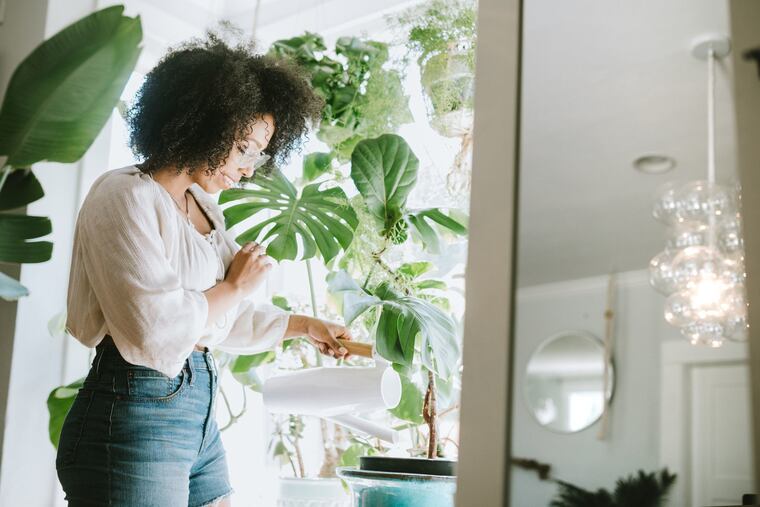Houseplants do not improve indoor air after all, Drexel study finds
How the myth of air-purifying houseplants grew bigger than a fiddle-leaf fig.

Even if you have a green thumb and wall-to-wall houseplants, the greenery is not purifying your indoor air enough to matter.
Drexel University scientists reached that contrarian conclusion after reanalyzing decades of studies that found plants can slowly remove chemical toxins from the air — in an airtight chamber.
In real-world environments like homes and offices, the Drexel researchers say, heating and air-conditioning systems and ordinary windows turn the air over so rapidly that plants are irrelevant to air quality.
Indeed, they calculated that it would take at least 10 plants per square meter of floor space — up to 1,000 plants, depending on their inefficiency — to purify a room’s air as much as opening a couple of windows.
The scientists are not suggesting you forswear your ficus and philodendron.
“Plants have positive psychological benefits. I like being around plants,” said senior author Michael Waring, an architectural and environmental engineer at Drexel. “But it doesn’t have any impact on indoor air quality.”
Why do countless home and health websites claim otherwise?
The answer is rooted in a famous 1989 paper published by NASA.
“Now that environmental scientists and government agencies agree that indoor air pollution is a realistic threat to human health, how can the problem be solved?” wrote the NASA scientists, who collaborated with the Associated Landscape Contractors of America. “If man is to move into closed environments, on Earth or in space, he must take along nature’s life support system.”
In a word, plants.
The NASA team tested houseplants to see how many micrograms of health-harming VOCs — “volatile organic chemicals” such as benzene and trichloroethylene — were removed from a sealed chamber in 24 hours. (Gerbera daisy was a top performer.)
» READ MORE: NASA launches satellite to explore where air meets space
Bill Wolverton, who led the NASA study, became a promoter of “growing fresh air,” writing a book on the subject and setting up a consulting company.
In ensuing years, the International Space Station crew grew plants and vegetables in “space gardens,” although the stated purpose was enjoyment and food, not cleaner air.
» READ MORE: Trump administration eases Obama-era rules on coal pollution
Many experts now say potted plants’ pollution-fighting ability has been grossly exaggerated. But Waring and his coauthor, Drexel doctoral student Bryan Cummings, appear to be the first to use data from 12 sealed-chamber studies to calculate the plants’ “clean air delivery rate,” or CADR.
CADR was developed in the 1980s by the Association of Home Appliance Manufacturers to evaluate how well portable household air purifiers filtered out microscopic particles of smoke, dust, and pollen. Basically, a CADR is the amount of clean air flowing out of the purifier on the highest fan speed.
Houseplants have a negligible CADR.
A typical particle air purifier “is around 5,000 times more effective than plants,” Waring said.
That does not change the vital importance of the Earth’s flora and soil microorganisms, which convert carbon dioxide — a “greenhouse gas” — into oxygen. And it doesn’t mean “biowall” technology can’t scale up the purifying power of plants. Drexel boasts that its own 22-foot-wide, 80-foot-tall wall of plants in its integrated sciences building is “North America’s largest living biofilter.”
Biowalls “have the potential to make worthy contributions to indoor VOC removal,” says the new study, published in the Journal of Exposure Science and Environmental Epidemiology.
But unlike furnaces, biofilters need constant care. “There can be maintenance problems,” Waring said.